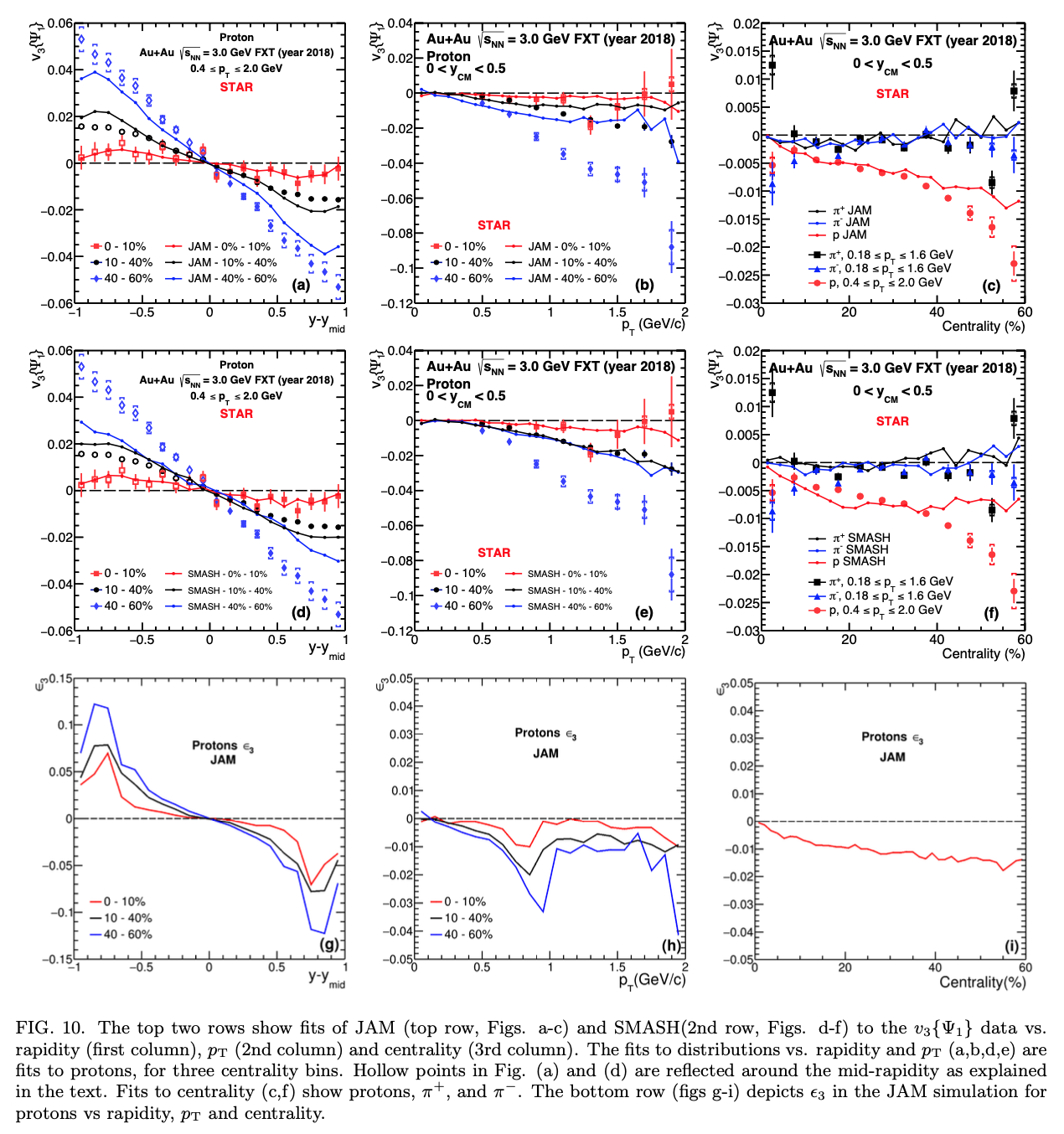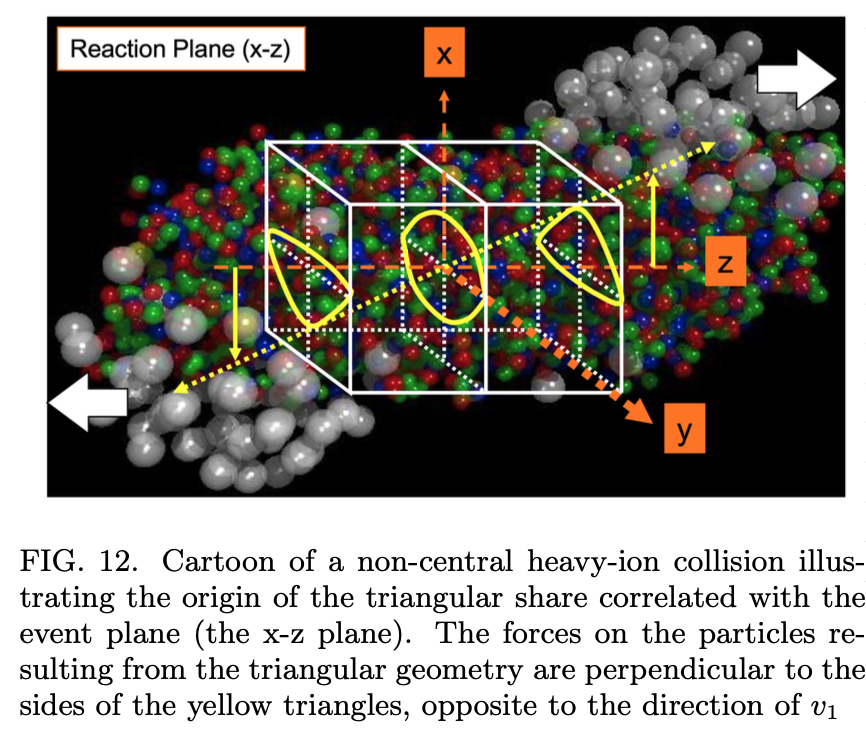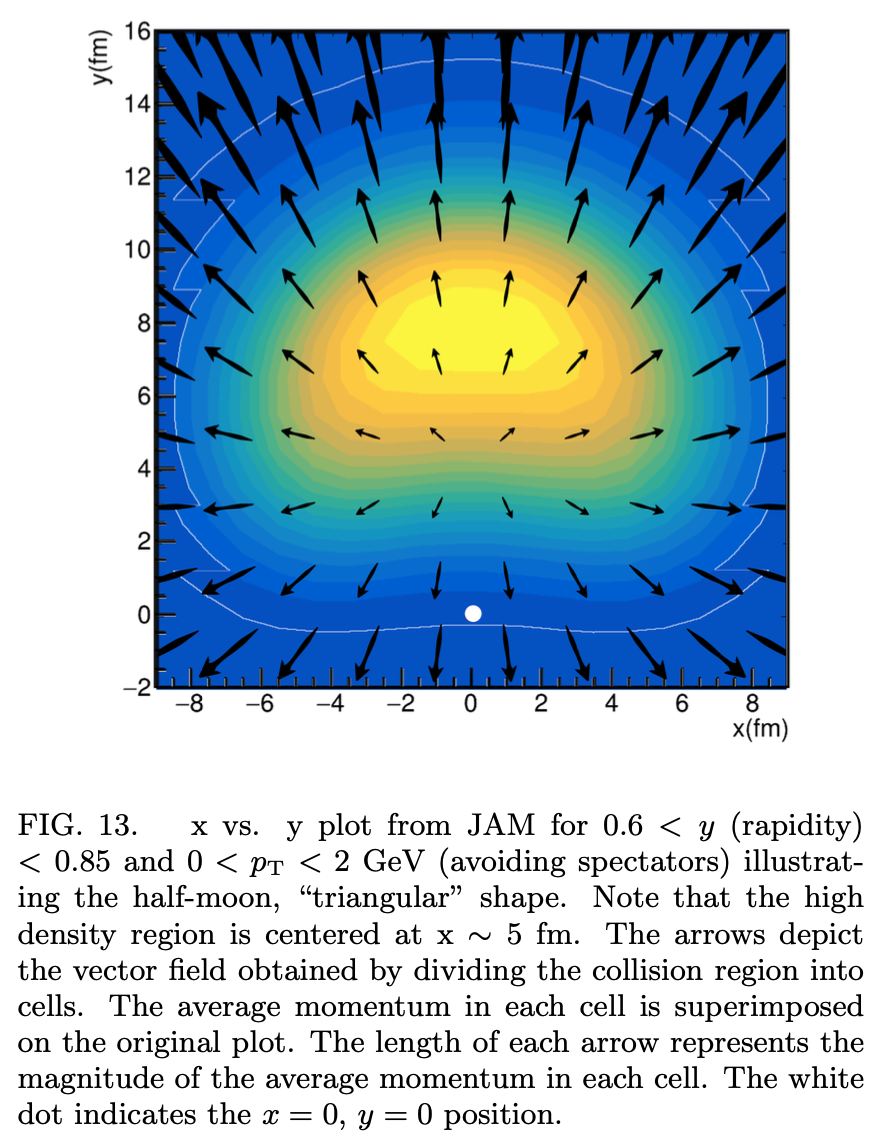Reaction Plane Correlated Triangular Flow in Au+Au Collisions at sqrt{s_NN} = 3 GeV
Updated on Thu, 2024-03-14 17:43 by cracz. Originally created by dchen on 2022-07-05 14:18.
Reaction Plane Correlated Triangular Flow in Au+Au Collisions at sqrt{s_NN} = 3 GeV
PAs: Cameron Racz, Yang Wu, Ding Chen, Erik Loyd, Richard Seto, Shinichi Esumi
Target Journal: Physical Review C Paper Draft: See attachments
Analysis Note:
Target Journal: Physical Review C Paper Draft: See attachments
Analysis Note:
- https://drupal.star.bnl.gov/STAR/blog/cracz/Analysis-Note-v3-from-psi1-3GeV
- https://drupal.star.bnl.gov/STAR/blog/rseto/Analysis-note-3-GeV-v3-paper-Models-0
PWGC Preview (Oct 7, 2022):
Abstract:
We report the observation of triangular flow that \it{is correlated with the reaction plane} \rm as identified by the first-order event plane, in 3 GeV center-of-mass Au+Au collisions at RHIC. Among the particles described - pions, kaons, and protons - the most significant effect is observed in protons. It is larger at higher rapidity, higher transverse momentum, and more peripheral collisions. The mid-rapidity slope is opposite in sign to the slope of directed flow. No significant effect is observed for pions and kaons. Comparisons with models suggest that a mean field potential is required to describe these results, and that the triangular shape is the result of stopping and nuclear geometry.
Figures:

















Physics Conclusion:
- v3 correlated to the event plane has been observed in baryons in sqrt{s_NN}=3 GeV Au+Au collisions – the strength for protons is a few percent
- Effect is weaker than HADES
- No statistically significant signal is seen in pions and Kaons (not shown since statistics is so bad).
- The slope is opposite to that of v1.
- The effect increases as a function of pT, as generally in the case of flow.
- The effect is stronger as one goes to more peripheral collisions.
- Theory:
- Flow needs two major ingredients. The first is a potential in a responsive medium driving the collective motion of particles. The second is an appropriate geometry. Comparisons with two models, JAM and SMASH, indicate that the required triangular geometry is provided by the dynamics of the collision, primarily from the nucleon nucleon cross section, the energy, and the nuclear thickness essentially cutting the nucleus in half when observed from one side in rapidity (stopping). In the two models, the force is provided by a nuclear mean field potential that is a function of baryon density. Interestingly, the potentials seem to be operational only on baryons and not on mesons, at least within the statistical accuracy available using the present data.
Presentations:
- Cameron Racz:
- QM 2022 Poster:
- PWG:
- https://drupal.star.bnl.gov/STAR/blog/cracz/Collaboration-Meeting-Update-September-2022
- https://drupal.star.bnl.gov/STAR/blog/cracz/Update-Event-Plane-Correlated-Triangular-Flow-sNN-3-GeV
- https://drupal.star.bnl.gov/STAR/blog/cracz/Event-Plane-Correlated-Triangular-Flow-sNN-30-GeV
- https://drupal.star.bnl.gov/STAR/blog/cracz/Preliminary-Request-3-GeV-results-Quark-Matter-2022
- https://drupal.star.bnl.gov/STAR/blog/cracz/identified-v2-and-v3-3-gev
- Yang Wu:
- Richard Seto:
- PWG:
»
- dchen's blog
- Login or register to post comments
